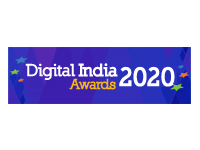Alternative Delivery Systems
Almost the entire attention of education and training efforts in LIS, is directed towards the information handlers, managers, suppliers, etc., who play the role of intermediaries or interfaces. This is a unique or perhaps the most unique sector, in which the actual users are relegated to the back stage, and the intermediaries hog the arc light.
World over, the use of printed media for information and entertainment is dwindling under terrible competing pressure of the audio-visual (and partly audio) media. A debate on the desirability of such a situation, is beyond the scope of the editorial. Perhaps this is a boon in disguise for countries with high level of illiteracy. The normal broadcast TV, Cable TV video programmes as sources of entertainment and also information (i.e. infotainment) have come to stay as a serious alternative to the printed text. An equally competing alternative is the multimedia in stand alone mode or on networks. Because of interactive features, the information delivery potential of the multi-media is considerably higher than that of the broadcast, one-to-many information delivery mode. The increasing tempo of electronic publishing has given further boost to the cybernet and audio-visual media users. The revolution commenced only a few years back and the trend is ascending. While one finds the reading habit of people nose-diving, before long, the present generation of "readers" may altogether disappear!
At this turning point of information business, the role of libraries and information centres needs to be redefined. It may be suicidal to hold out stubbornly against the ensuing deluge. It would be far more realistic to try to float and utilize the situation to the best advantage.
The first step would be to understand the users, better than what we have done so far. The purpose is not to find out how they could be put on a diet of conventional print on paper materials, but to determine their consumption preferences and habits.
The next step would be to redesign the information delivery mechanisms, with offerings of a new mix of print/text, graphics, audio and video products on a la carte style. In this context, the public library system in Singapore could serve as a model.
The newly established Tampines Regional Library in Singapore offers a wide array of state of art information delivery systems: CD-ROMs, interactive TV, laser disk players, a public view data service, online public access catalogue system, remote dial-up access to library catalogue and so on. At the same time some local libraries have facilities for story-telling, talks and programmes on items of topical interest such as adolescent problems, health environment, and self improvement.
The public telecast system is not meant exclusively for viewing movies and soap operas. It provides the most up to date news. The popularity of quiz programmes, and special feature items on wildlife, environment, social issues, etc. only goes to prove their value in terms of educational and informational message communication. The broadcast systems are increasingly being used as an alternative to classroom teaching. Video programmes on specialized topics such as management and computer science, as alternative to the teaching processes itself, have caught on. On the other hand, cybersurfing is not the pastime of computer buffs. In India also people from all walks of life — students, housewives, R&D professionals, businessmen, stock market operators, journalists, advertizing professionals now play with the technology both for information collection and entertainment.
Taking cue from the experience of India and elsewhere, we better accept with grace that the trickle of new media has turned into a flood. And the flood has assumed such proportions as to threaten the utility of libraries in the conventional sense of their existence. We, therefore, need to change our tack and reinforce the information delivery capabilities of the libraries by adopting new information access tools. Sooner we do, the better. A new breed of information users will definitely flock.
— A. Lahiri





















